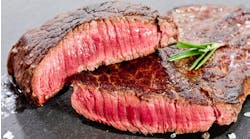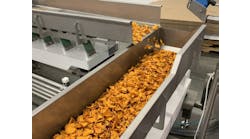The FDA in June released a software tool to help growers, packers, processors, manufacturers, warehousers, transporters and retailers in the food industry determine the vulnerability of individual food facilities to biological, chemical, or radiological attack.
The program, called the CARVER + Shock Software Tool, is a science-based prevention strategy to safeguard the food supply. This tool is an example of the approach being developed as part of a broader food protection strategy under development by FDA.
FDA's goal in developing the CARVER + Shock software is to maximize protection of the American food supply, said David Acheson, FDA assistant commissioner for food protection. "The relative risk-ranking methodology used by the CARVER + Shock software has been designed to assist facility operators in identifying potential vulnerabilities and in providing preventive measures to increase the defense of products and operations."
CARVER + Shock was developed by FDAs Center for Food Safety and Applied Nutrition, in collaboration with Sandia National Laboratories, the Institute of Food Technologists, USDAs Food Safety and Inspection Service, National Center for Food Protection and Defense, state representatives and private industry representatives.
The name of the risk assessment software is derived from the acronym CARVER, which refers to six attributes used to evaluate targets for attack.
- Criticality: What impact would an attack have on public health and the economy?
- Accessibility: How easily can a terrorist access a target?
- Recuperability: How well could a system recover from an attack?
- Vulnerability: How easily could an attack be accomplished?
- Effect: What would be the direct loss from an attack, as measured by loss in production?
- Recognizability: How easily could a terrorist identify a target?
And the seventh item addresses the psychological impacts of an attack or shock attributes of a target. For example, the psychological impact tends to be greater when a large number of deaths is involved or if the target has historical or cultural significance.
To see a consumer article CARVER + Shock: Enhancing Food Defense, see www.fda.gov/consumer/updates/carvershock061107.html.

